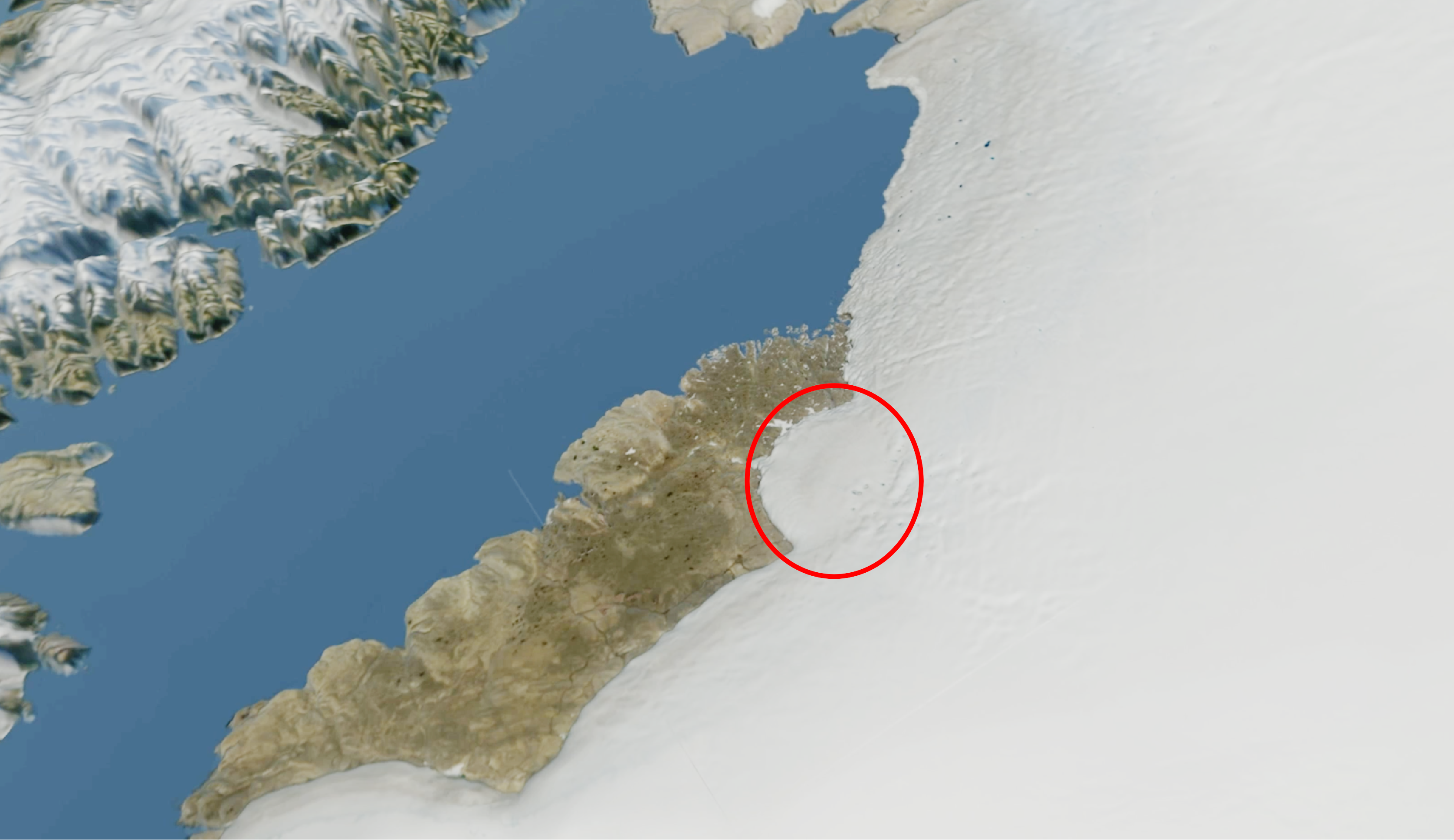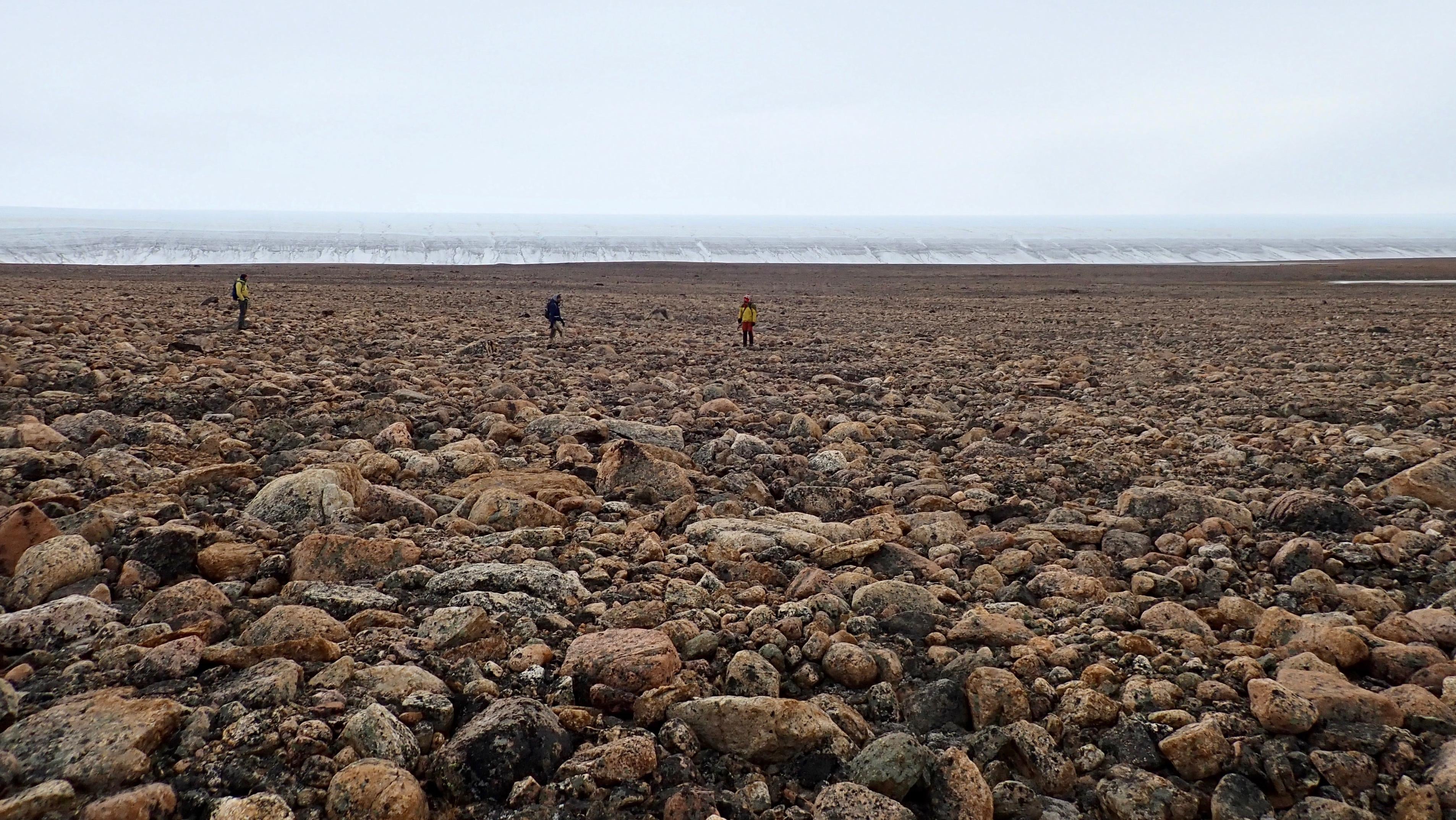A hidden impact crater in northwestern Greenland dates back some 58 million years, making it far older than previous estimates. The challenge now will be to find further evidence of what was surely a massively disruptive global-scale event.
The dating of sand and rocks associated with the impact event enabled an international team of researchers to derive the new estimate. The Greenland crater, measuring 31 kilometres wide, was only discovered seven years ago, and it’s buried under the 1,000-metre Hiawatha Glacier, making it a challenging object to study.
“We were very surprised that the crater was 58 million years old,” Nicolaj Larsen, a geoscientist at the University of Copenhagen and a co-author of the new study, told me in an email. “All the circumstantial evidence we had so far suggested that the crater was much younger and from a period when the Greenland Ice Sheet existed.”

Larsen and his colleagues initially figured that the crater was somewhere between 3 million and 1,200 years old. The apparent recency of the impact during the Late Pleistocene presented a tantalising possibility, as it suggested humans were affected by the event. It also potentially spoke to the Younger Dryas period, a cooling phase that began some 12,900 years ago. But the new research, published today in Science Advances, suggests the impact did not affect humans, nor did it kindle the Younger Dryas. As to the actual effects of the impact, that is now a question in need of an answer.
The Greenland Ice Sheet formed between 2 million and 3 million years ago, long after the iron-rich asteroid smashed into what is now northwest Greenland. At the time of the impact, Greenland featured a temperate rainforest and a diverse ecology. The crater — which ranks among the 25 largest asteroid craters on Earth — became buried in ice over time, which is why scientists discovered it only recently, and completely by accident.
Larsen was poring over maps of Greenland in 2015 when he noticed a circular-like feature in the bedrock beneath Hiawatha Glacier. Subsequent surveys with ground-penetrating radar, or in this case ice-penetrating radar, confirmed the presence of the impact structure, leading to a 2018 paper announcing its discovery.
That the crater is so old came as a huge surprise to the team, which included researchers from the Natural History Museum of Denmark, the GLOBE Institute at the University of Copenhagen, and the Swedish Museum of Natural History in Stockholm. The pre-existing evidence, though circumstantial, pointed to a relatively recent event, as the shape of the crater looks “relatively fresh,” the ice stratigraphy contains disturbed ice from the last ice age, and materials from the region contain organic remnants from a boreal forest — and “the last time a boreal forest grew in North Greenland was two to three million years ago,” Larsen said.

What Larsen and his colleagues really needed were samples from the crater floor — not an easy task given the 304.80 m of ice piled on top. Instead, the team visited outlying areas across three field seasons to find materials suitable for dating, specifically impact rocks located in glacial debris beyond the ice sheet.
Said Larsen: “This was not an easy task, as fieldwork in remote northern Greenland is difficult and extremely expensive.” Key to the new research was the collection of partially melted sand and shocked zircon crystals, which were delivered downstream of the crater by meltwater.
At the NHM of Denmark, scientists used a laser to heat the sand grains until they released argon gas, while a team at the Swedish MNH used uranium-lead dating for the Zircon. Both techniques yielded the same result, providing the new estimate for the impact.

The challenge moving forward will be for scientists to link this event to other lines of evidence associated with the impact. The asteroid smashed into northwestern Greenland some 8 million years after the extinction of the dinosaurs, and given the size of the asteroid — at roughly 1 km wide — it would’ve disrupted the global climate to a considerable degree.
“Our next step is to investigate geological sections from the Paleocene that are 58 million years old to see if we can identify an impact signal,” Larsen said. “This is important if we want to understand if an impact of this size altered the climate on Earth or led to any mass extinction, which we doubt it did.”
The new paper adds further clarity to this fascinating event, while opening up new avenues for future research. Undoubtedly, this ancient gaping wound in Greenland still has many stories to tell.
